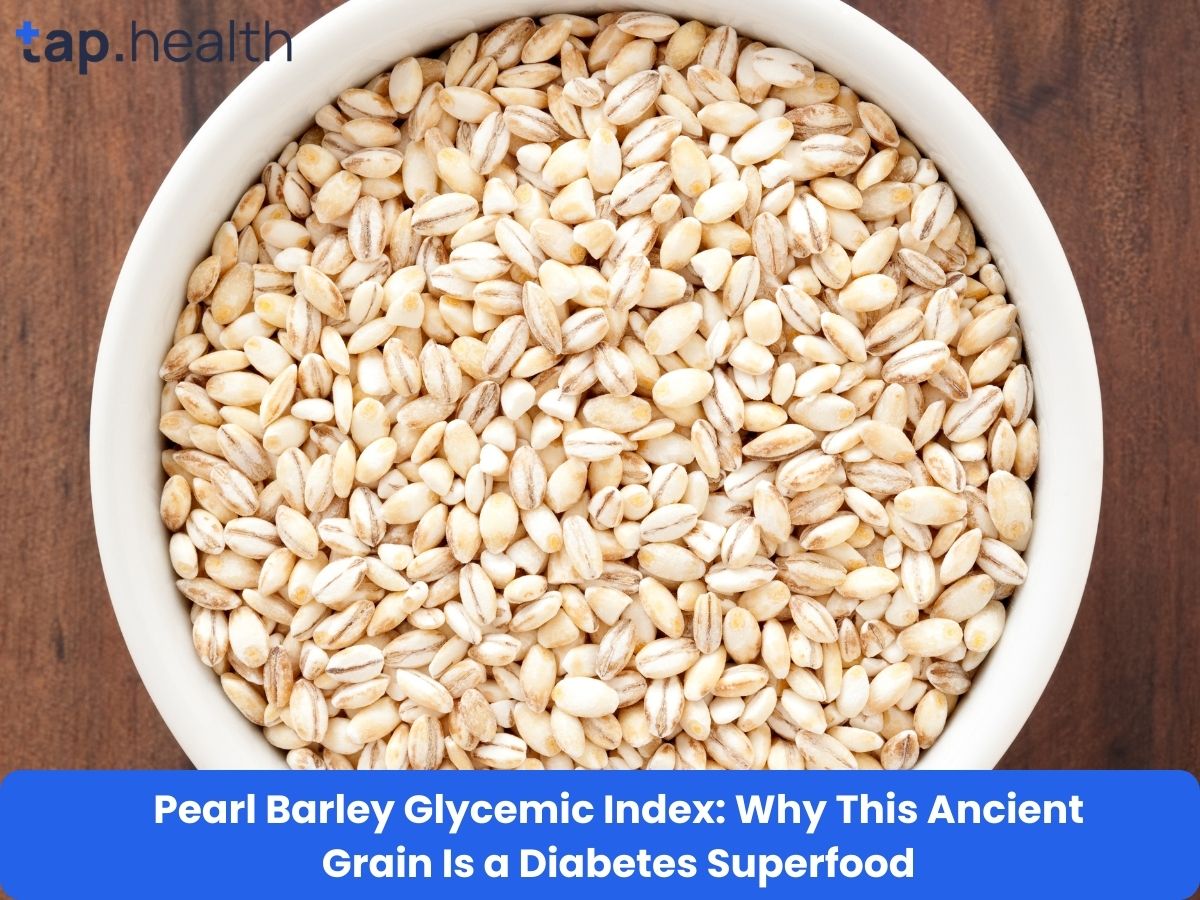Table of Contents
- Fiber’s Role in Diabetes Management
- Dietary Fiber: Your Key to Balanced Blood Sugar
- High-Fiber Foods for Better Diabetes Control
- The Best Fiber-Rich Recipes for Diabetics
- Mastering Diabetes with a High-Fiber Diet
- Frequently Asked Questions
- References
Living with diabetes can feel like navigating a complex maze, but managing your blood sugar doesn’t have to be overwhelming. One powerful tool often overlooked is diet, and a key player in that diet is fiber! In this post, we’ll explore Fiber’s Minute: Boosting Diabetes Management Through Diet, examining how incorporating the right types of fiber can significantly impact your blood sugar levels and overall health. We’ll uncover simple, practical strategies to seamlessly add more fiber to your meals, helping you take control of your diabetes management. Get ready to discover how a few simple dietary changes can make a world of difference!
Fiber’s Role in Diabetes Management
Managing diabetes effectively requires a holistic approach, and diet plays a crucial role. A significant portion of the global diabetes population, 61% of whom are between 20 and 64 years old, and 39% aged 65+ (Source), can benefit greatly from understanding the power of fiber. In India and other tropical countries, where dietary habits often heavily feature rice and refined carbohydrates, incorporating sufficient fiber is particularly vital.
The Benefits of Fiber for Diabetes
Fiber, a type of carbohydrate the body can’t digest, helps regulate blood sugar levels. This is because it slows down the absorption of glucose into the bloodstream, preventing sharp spikes and crashes. For individuals with diabetes, these fluctuations can lead to complications. High-fiber foods, such as legumes (beans, lentils), whole grains (brown rice, oats), and fruits abundant in tropical regions like mangoes and papayas, are excellent choices. Including these in your diet can improve insulin sensitivity and help maintain healthy blood sugar levels.
Practical Tips for Increasing Fiber Intake
Start by gradually increasing your fiber intake to avoid digestive discomfort. Swap refined grains for whole grains, add a serving of legumes to your meals, and incorporate more fruits and vegetables into your daily diet. Consider adding chia seeds or flaxseeds to your smoothies or yogurt for an extra fiber boost. Remember to drink plenty of water throughout the day, as fiber absorbs water and can help prevent constipation. Consulting a nutritionist or doctor for personalized dietary advice tailored to your specific needs and health status is always recommended.
Taking Action for Better Diabetes Management
In India and tropical countries, access to fresh fruits and vegetables varies, but prioritizing whole, unprocessed foods is key. Make conscious choices to incorporate fiber-rich foods into your meals and snacks. This small change can have a significant impact on your long-term diabetes management. Along with dietary changes, remember that regular exercise is essential for diabetes management, contributing to overall health and well-being. Seek advice from healthcare professionals to create a personalized diabetes management plan that includes dietary adjustments and lifestyle modifications suitable for your region and circumstances. Maintaining a strong immune system is also crucial, and you can learn more about boosting immunity while managing diabetes to further support your health journey.
Dietary Fiber: Your Key to Balanced Blood Sugar
Maintaining stable blood sugar levels is crucial, especially in regions like India and other tropical countries where diabetes is prevalent. Did you know that daily consumption of sugary beverages raises your diabetes risk by a staggering 26%? This highlights the urgent need for dietary changes, and incorporating more fiber into your diet is a powerful first step.
Understanding Fiber’s Role in Blood Sugar Control
Fiber, particularly soluble fiber found in fruits, vegetables, and legumes, plays a vital role in regulating blood sugar. It slows down the absorption of sugar into your bloodstream, preventing those sharp spikes and subsequent crashes that characterize uncontrolled diabetes. This gentle release of glucose helps maintain consistent energy levels throughout the day and reduces the burden on your pancreas. Think of fiber as a natural buffer against blood sugar fluctuations.
Practical Tips for Increasing Fiber Intake
For individuals in India and tropical regions, incorporating fiber-rich foods readily available locally is key. Prioritize whole grains like brown rice, millets (like ragi and jowar), and oats. Include plenty of pulses (lentils and beans), leafy greens, and a variety of colorful fruits and vegetables, such as mangoes, bananas, and papaya (adjusting portion sizes based on individual needs and blood sugar levels). Consider incorporating chia seeds or flaxseeds, excellent sources of soluble fiber, into your meals. Small, consistent changes in your daily diet can make a significant difference. Building healthy habits is crucial for long-term success, and you can learn more about that in our article on How to Build Habits That Help Control Blood Sugar Levels.
Take Control of Your Diabetes
By making mindful choices about the fiber content in your diet, you can significantly improve your blood sugar management and contribute to overall well-being. Start incorporating these fiber-rich foods into your daily meals and consult with a healthcare professional or registered dietitian to create a personalized plan tailored to your specific needs and preferences. Remember, consistent effort is key to managing diabetes effectively. It’s also important to consider other aspects of your health, such as cholesterol. Learn more about How to Manage Cholesterol Levels with Diabetes?
High-Fiber Foods for Better Diabetes Control
Managing diabetes effectively often hinges on making smart dietary choices. While individual carbohydrate needs vary, a common guideline suggests aiming for around 45–60 grams of carbs per meal for many individuals with diabetes. However, it’s crucial to consult with your doctor or a registered dietitian to determine the best carbohydrate intake for your specific needs. Focusing on high-fiber foods is a key strategy to help regulate blood sugar levels and improve overall diabetes management, particularly relevant in Indian and tropical climates where many fiber-rich options are readily available.
Fruits & Vegetables Abundant in Tropical & Indian Climates
Fiber plays a vital role in slowing down the absorption of sugars into the bloodstream, preventing those sharp spikes in blood glucose that can be problematic for people with diabetes. Incorporating plenty of fruits and vegetables into your diet is crucial. Think of the readily available mangoes, bananas, and papayas, rich in fiber and essential nutrients. Similarly, many Indian staples like legumes (lentils, beans, chickpeas), okra, and various leafy greens offer excellent sources of fiber. These foods not only contribute to better blood sugar control but also provide essential vitamins and minerals crucial for overall health. For more ideas on specific foods to include, check out 20 Best Foods for People with Diabetes – Tap Health.
Grains & Legumes: The Cornerstone of a Healthy Diet
Beyond fruits and vegetables, including whole grains like brown rice, oats (especially popular in breakfast porridges across many regions), and millets (a staple in many Indian diets) is also beneficial. These grains are packed with fiber and provide sustained energy, preventing those mid-afternoon blood sugar crashes. Legumes, a cornerstone of many Indian and Southeast Asian cuisines, are incredibly versatile and offer a fantastic source of both fiber and protein. Adding a serving of lentils or chickpeas to your meals can significantly improve your fiber intake. Understanding the nuances of different dietary approaches can also be helpful, so consider exploring Low-Carb vs. Moderate-Carb Diets for Diabetes: What Works Best?
Practical Tips for Incorporating Fiber
Remember to gradually increase your fiber intake to avoid digestive discomfort. Start by adding a serving of high-fiber foods to each meal and gradually increase the quantity as your body adjusts. Drinking plenty of water is essential when increasing fiber consumption to aid digestion and prevent constipation. Consult with a healthcare professional or registered dietitian to create a personalized meal plan tailored to your specific needs and preferences. This ensures you’re managing your diabetes effectively while enjoying the diverse and delicious culinary landscape of your region.
The Best Fiber-Rich Recipes for Diabetics
Managing Blood Sugar with Fiber-Packed Meals
Diabetes management is crucial, especially in regions like India and other tropical countries where dietary habits significantly impact blood sugar levels. A high-fiber diet plays a vital role in regulating blood glucose and reducing the risk of complications. Nearly 15% of diabetics experience foot ulcers, highlighting the importance of proactive health management. Including fiber-rich foods can help improve overall health and reduce the risk of such complications. Prioritizing fiber is a simple yet powerful step toward better diabetes management.
Delicious and Effective Recipes
Let’s explore some delicious and easily accessible recipes perfect for managing diabetes in tropical climates:
* **Moong Dal Cheela (Lentil Pancakes):** This South Asian staple is packed with protein and fiber, making it an excellent breakfast or snack option. The high fiber content helps regulate blood sugar spikes. Use whole wheat flour for an added boost of fiber.
* **Rajma Masala (Kidney Bean Curry):** A hearty and flavorful dish, Rajma is rich in fiber and protein. Serve with brown rice or roti (whole wheat flatbread) for a complete and balanced meal. Kidney beans are a fantastic source of soluble fiber, helping to slow down glucose absorption.
* **Mixed Vegetable Curry with Oats:** Add rolled oats to your favorite vegetable curry for a significant fiber boost. Oats are readily available in many tropical regions and contribute to a healthy, fiber-rich diet. This helps regulate blood sugar levels and promotes healthy digestion.
Taking Control of Your Health
By incorporating these fiber-rich recipes into your daily diet, you can actively manage your blood sugar levels and minimize the risk of diabetes-related complications, such as those concerning foot ulcers. For more ideas on managing your diet throughout the year, check out our guide on Creating Diabetes-Friendly Dishes for the Holidays. Remember to consult your doctor or a registered dietitian for personalized dietary advice tailored to your specific needs and health conditions. Prioritizing fiber is an investment in your long-term health and well-being. And don’t forget the importance of fruit! Learn more about the 5 Best Fruits For People with Diabetics.
Mastering Diabetes with a High-Fiber Diet
The Power of Fiber in Diabetes Management
Diabetes disproportionately affects low- and middle-income countries, with over 75% of those living with the condition residing in these regions, as highlighted by the International Diabetes Federation. In India and other tropical countries, where dietary habits often play a significant role, incorporating a high-fiber diet is crucial for effective diabetes management. Fiber helps regulate blood sugar levels, preventing those dangerous spikes and crashes common with diabetes. This is because fiber slows down the absorption of sugar into the bloodstream.
Practical Steps for a High-Fiber Diet
To effectively manage your diabetes, focus on increasing your fiber intake through whole grains like brown rice, millets (ragi, bajra, jowar are popular choices in India), and whole-wheat roti. Legumes such as lentils (dal) and beans are excellent sources of fiber and protein, contributing to satiety and improved blood sugar control. Don’t forget the power of fruits and vegetables! Include a variety of colorful options like leafy greens, okra, and seasonal fruits abundant in your region. Remember to gradually increase your fiber intake to avoid digestive discomfort. For more tips on managing weight while maintaining a healthy diet, check out our blog on How to Lose Weight with Diabetes Diet Plan.
Region-Specific Considerations
In many Indian and tropical countries, readily available, naturally high-fiber foods form the basis of traditional diets. However, the adoption of processed foods often leads to a decrease in fiber consumption. By consciously re-incorporating traditional, fiber-rich staples and limiting processed foods, individuals can significantly improve their diabetes management. Consult a healthcare professional or registered dietitian for personalized dietary advice tailored to your specific needs and cultural preferences. They can help you create a sustainable plan to boost your fiber intake and effectively manage your diabetes. Understanding the relationship between diabetes and obesity is also crucial; you can learn more in our article, Understanding the Link Between Diabetes and Obesity.
Frequently Asked Questions on Boosting Diabetes Management Through Diet
Q1. What is the role of fiber in managing diabetes?
Fiber, found in whole grains, legumes, fruits, and vegetables, slows down the absorption of glucose, preventing blood sugar levels from rising and falling too sharply. This helps in managing diabetes effectively.
Q2. How can I increase my fiber intake for better diabetes management?
Gradually increase your fiber intake by replacing refined grains with whole grains, adding legumes to your meals, and eating more fruits and vegetables. Prioritize whole, unprocessed foods.
Q3. Are there any potential challenges or side effects of increasing fiber intake?
Increasing fiber too quickly can sometimes lead to digestive issues. It’s best to increase your fiber intake gradually and to consult with a healthcare professional for personalized advice.
Q4. Besides diet, what else is important for managing diabetes?
Regular exercise is crucial in complementing dietary changes for optimal diabetes management and overall well-being.
Q5. Is a high-fiber diet suitable for everyone with diabetes?
While a high-fiber diet is beneficial for most people with diabetes, it’s essential to get personalized dietary advice from a healthcare professional to address individual needs and prevent potential problems.
References
- A Practical Guide to Integrated Type 2 Diabetes Care: https://www.hse.ie/eng/services/list/2/primarycare/east-coast-diabetes-service/management-of-type-2-diabetes/diabetes-and-pregnancy/icgp-guide-to-integrated-type-2.pdf
- Children with Diabetes : A resourse guide for families and school. : https://www.health.ny.gov/publications/0944.pdf



